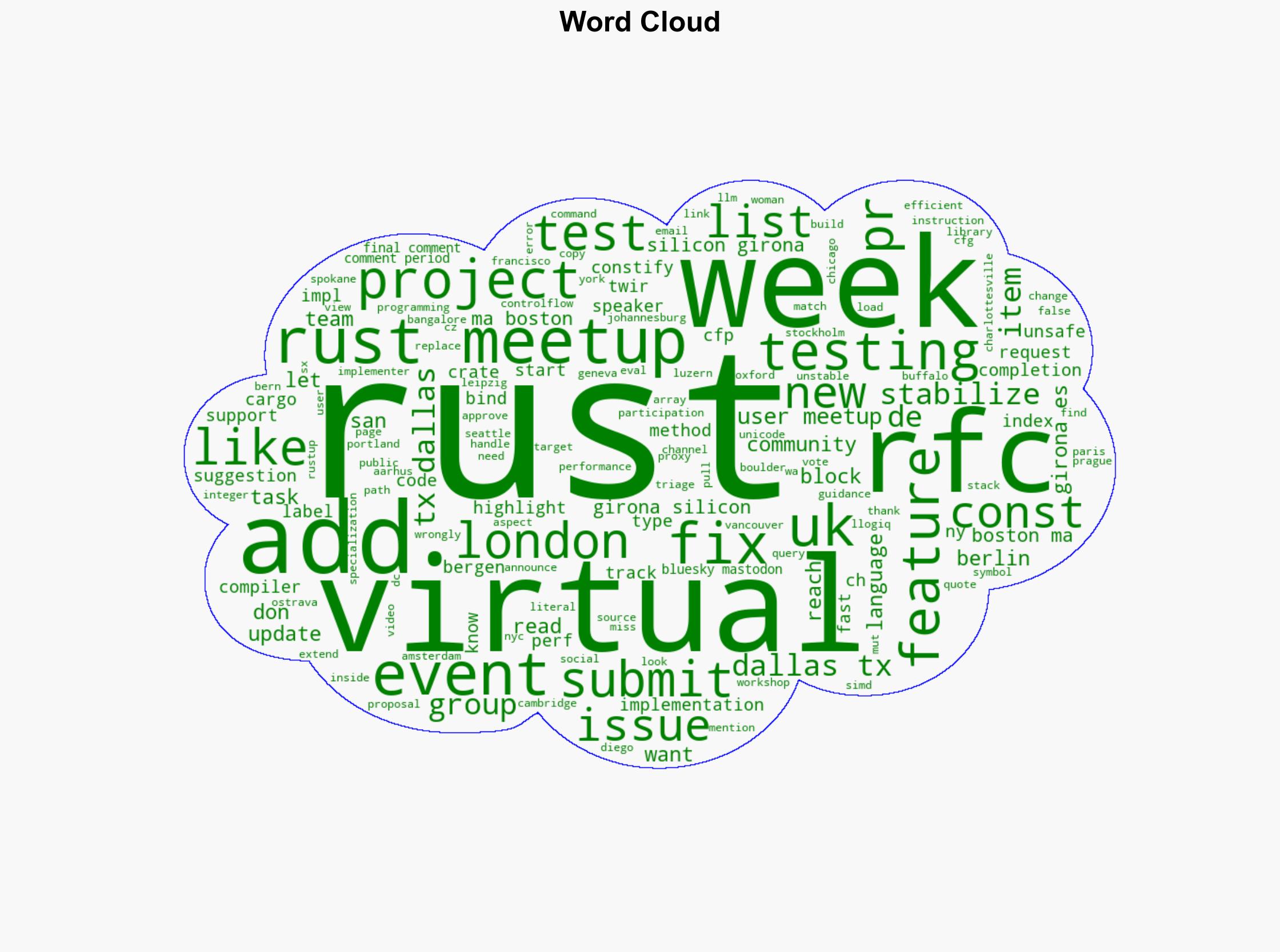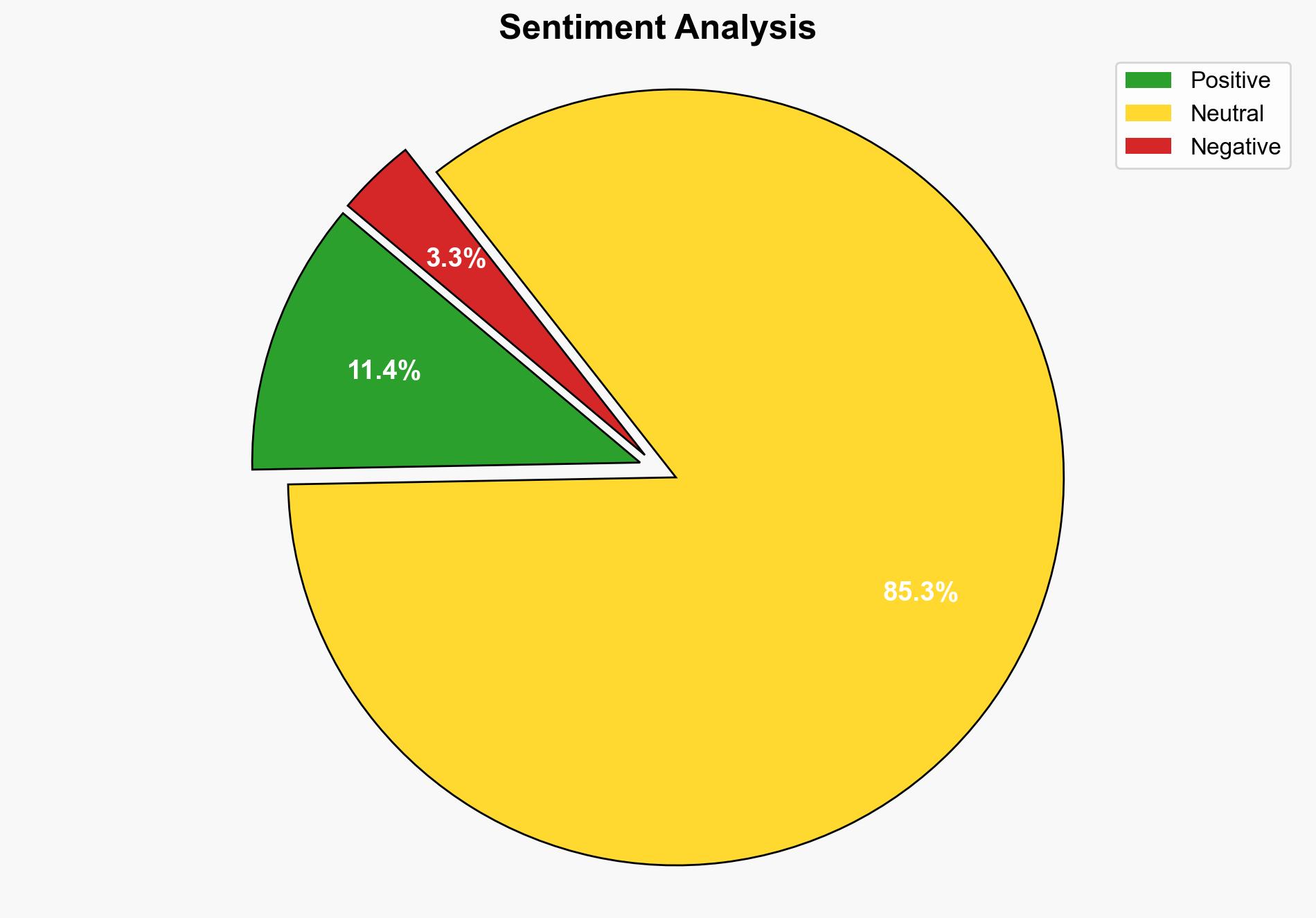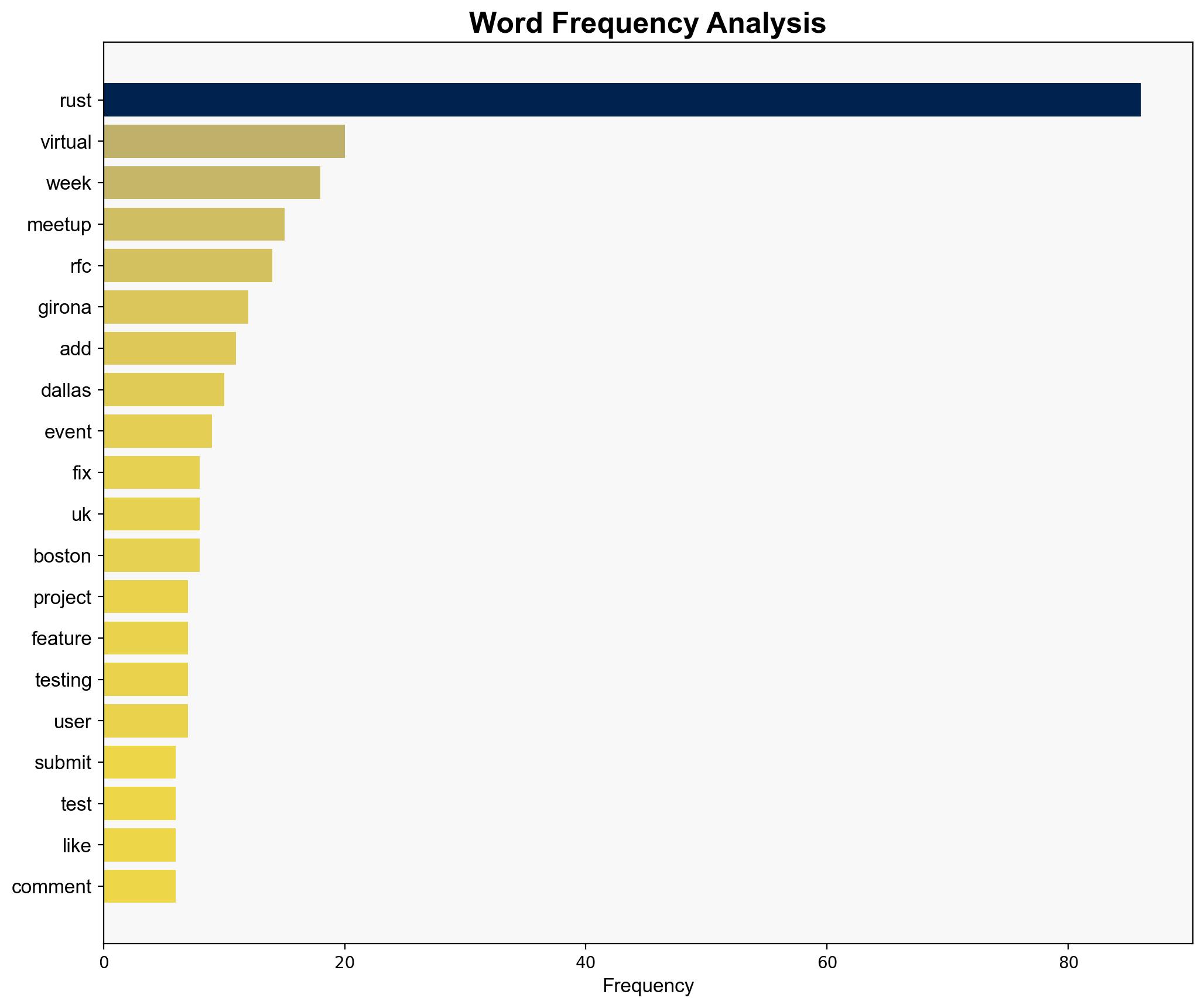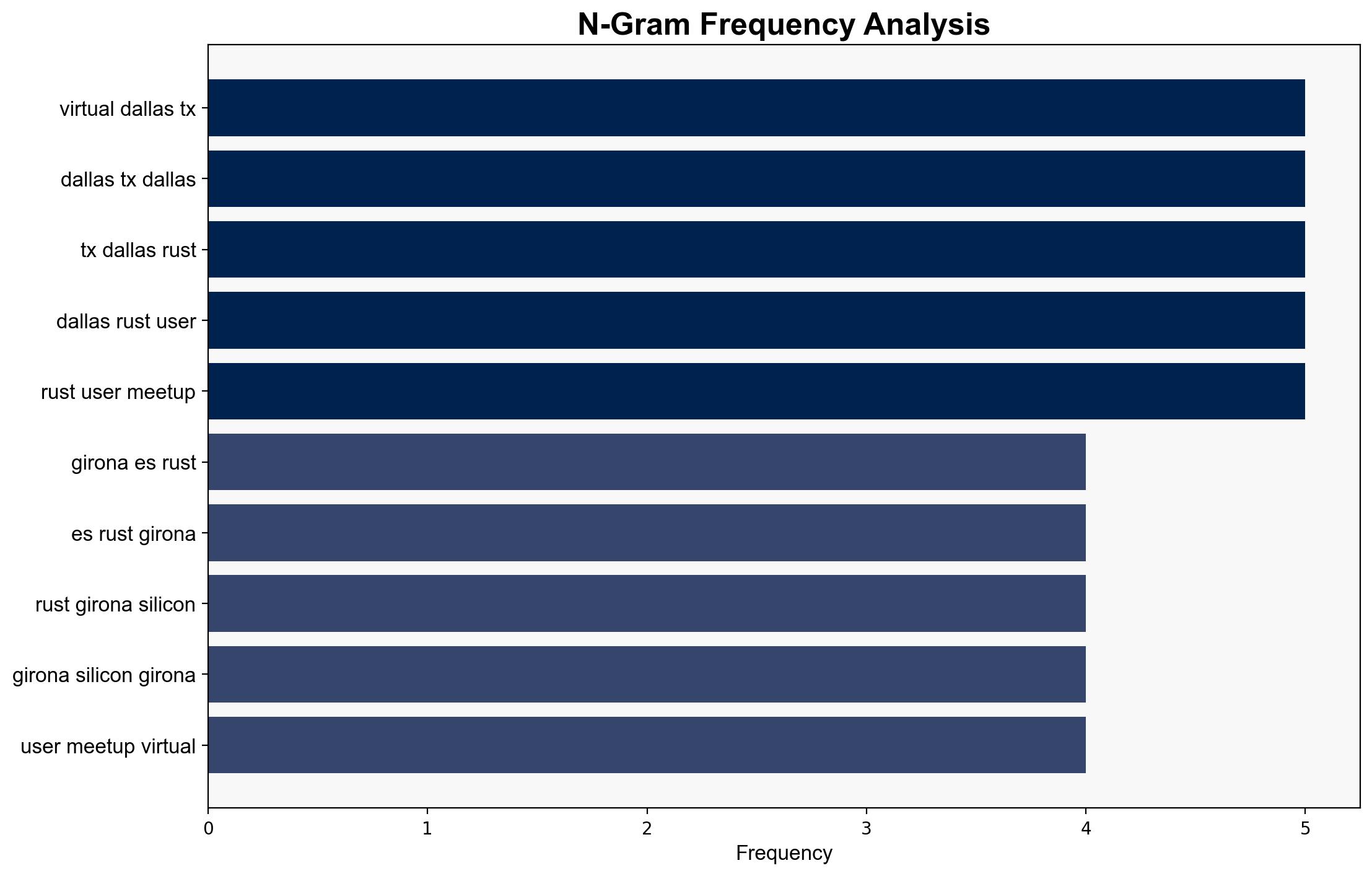This Week In Rust This Week in Rust 625 – This-week-in-rust.org
Published on: 2025-11-12
AI-powered OSINT brief from verified open sources. Automated NLP signal extraction with human verification. See our Methodology and Why WorldWideWatchers.
Intelligence Report: This Week In Rust This Week in Rust 625 – This-week-in-rust.org
1. BLUF (Bottom Line Up Front)
The Rust programming community is actively engaging in collaborative development and testing of new features, which indicates a healthy and dynamic ecosystem. The most supported hypothesis is that this collaborative environment will lead to increased adoption and innovation in Rust-based projects. Confidence Level: Moderate.
2. Competing Hypotheses
Hypothesis 1: The active engagement and open-source contributions in the Rust community will lead to significant advancements in the language’s capabilities, fostering greater adoption in software development.
Hypothesis 2: Despite the active community engagement, the complexity and rapid evolution of Rust may deter new contributors, potentially slowing down its adoption and innovation.
Hypothesis 1 is more likely given the structured approach to community involvement and the emphasis on mentorship and collaboration, which can mitigate barriers to entry for new contributors.
3. Key Assumptions and Red Flags
Assumptions: The community’s current level of engagement and collaboration will continue. The infrastructure for contribution and testing is robust and accessible.
Red Flags: Potential burnout among contributors due to high expectations for rapid development. The complexity of the language may still pose a barrier to new contributors despite mentorship efforts.
Deception Indicators: None identified in the provided text.
4. Implications and Strategic Risks
The continued growth and innovation in the Rust community could lead to its increased use in critical software infrastructure, which may attract attention from cyber threats aiming to exploit vulnerabilities. Additionally, if the community fails to manage contributor burnout, it could lead to a slowdown in development and innovation.
5. Recommendations and Outlook
- Actionable Steps: Encourage the Rust community to implement structured onboarding processes to reduce complexity for new contributors. Develop resilience strategies to manage potential contributor burnout.
- Best Case Scenario: Rust becomes a leading language for reliable and efficient software, with a robust and sustainable community.
- Worst Case Scenario: Contributor burnout and complexity barriers lead to a stagnation in development and reduced adoption.
- Most-likely Scenario: Continued moderate growth with incremental improvements in language features and community engagement.
6. Key Individuals and Entities
Michael Buche – Contributor and community member involved in suggestion submissions.
7. Thematic Tags
Regional Focus: Global
Structured Analytic Techniques Applied
- Causal Layered Analysis (CLA): Analyze events across surface happenings, systems, worldviews, and myths.
- Cross-Impact Simulation: Model ripple effects across neighboring states, conflicts, or economic dependencies.
- Scenario Generation: Explore divergent futures under varying assumptions to identify plausible paths.
Explore more:
Regional Focus Briefs ·
Daily Summary ·
Methodology





